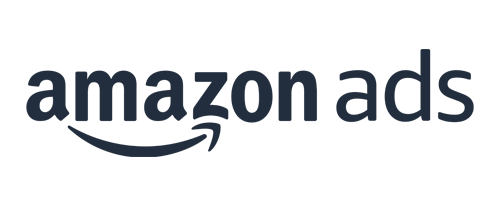
Hi there! My name is Will Marcotte, and I’ve been with our Services team at Seller Labs for about four years now. Before and during that time, I’ve had the pleasure of personally working with over 100 online sellers and helped develop strategies for hundreds of Amazon businesses. And now, I’m bringing that knowledge and experience directly to you through blog posts, videos, webinars, Q&As, and more! Be on the lookout for topical hints and heads-up coming from me very soon. In the meantime, please take a look at these tips we have to share with you. Enjoy!
William Marcotte
Marketing Manager and Online Advertising Expert at Seller Labs
We’re right in the thick of it, the fourth quarter of the year and one of the busiest shopping seasons ever. With so many shoppers on the platform, that should also translate to a huge boost in sales for you as a seller. However, you must have the right strategy for your products to see that success, otherwise these shoppers will bypass you. Your products need to look good, have an accurate product description, and have great customer reviews. You also need to make sure that you’re advertising effectively. If you have questions about what you still have time to do before the holiday shopping rush, click here to find the answers.
On the days of Black Friday and Cyber Monday, you actually shouldn’t have to do much; the major effort comes in the preparation in the weeks leading up to these shopping days. The only real action on those days should be checking that your advertising budgets don’t run out and that your inventory can sustain the increased order count. After the dust settles, you hope to have a tidy sum of extra money in your account. However, your focus shouldn’t just be on this year’s Q4 performance, but on the lessons you can learn from the data collected during this time.
Let’s take a look at the key metrics you may want to keep an eye on this year to keep track of for the next one.
Cost per Click (CPC)
The first thing we’ll look at is Cost per Click or CPC. Simply put, this is how much you’re paying, on average, for a given click on each of your ads during a select time period. You might be thinking, “ah, so we note what my CPC is this year, and it should be the same next year, right?”
Well, not quite.
Even if you’re being consistent with bids on relevant keywords, that may not be enough to keep profitable clicks in the right placements coming in. Two things will keep your CPC and/or bids rising as time goes on: inflation and competition.
Both sellers and customers are keenly aware of inflation at the moment, and the fact is that inflation is (at one rate or another) steadily increasing prices over time. With that in mind, the amount you’ll have to pay for a profitable placement on Amazon will also continue to rise.
Even if it’s going to be different (and likely higher), your CPC is still an important metric to track from one year to the next, as its fluctuation during this year’s Q4 can help you predict trends throughout the following high-traffic periods.
Best Sellers
As I mentioned earlier, it’s not (just) about the money for Amazon sellers but about keeping track of the right metrics. Another of those metrics is which products in your catalog sell the best. Now does this mean that they sold more units than others, or that they brought in more revenue than the others?
Honestly, these figures should be the same, but that sometimes isn’t the case. For example, if you have a product that sells a ton of units, but doesn’t have great margins, consider revisiting the price point for the item to improve those margins. In opposite cases, when a product only sells occasionally but brings in great revenue, you may consider updating your Amazon listing and/or advertising strategy to move units more consistently.
Price Adjustments
Regarding updating your price point, most people believe that raising your price for a given product is an offensive suggestion. However, doing this can actually result in more sales, rather than fewer. It’s all about the perception of your product; a lower price may be attractive to some shoppers, but to others, the lower price could be perceived as cheapness.
On the other hand, a higher price may cause some people to close your listing and move on, but it will cause others to regard your product as a premium product, even if it appears identical to a lower-priced alternative. Also, be wary of using repricing tools, as they can sometimes drop your price to incredibly low levels when someone else makes a pricing error. Be sure to set those minimums!
If you’re already charging relatively high for a given item, lowering the price could be a reasonable method for capturing a higher number of customers. Still, this may not be the best option. Instead of impulsively dropping your price, consider updating your listing to make it more appealing. Revisiting your product titles, bullet points, and images can dramatically help with increasing your Amazon SEO, along with taking a close look at your backend search terms.
Suppose you feel that your price is justified, and you’ve already made updates to the product listing. Then your best option is to work on product advertising as effectively as possible using Sponsored Product ads (and, if you’re Brand Registered, Sponsored Brand ads) to get the most profitable searches consistently coming to your listing.
If you need help with your advertising, or aren’t sure about the best methods, Seller Labs can help. You can make it without doing anything at all by signing up for our Advertising Management Services, and we’ll take care of all the heavy lifting.
Hack Your Amazon Business Growth with Seller Labs Services
ACoS/RoAS
So we’ve looked at the items that sold well, and investigated how much you’ve paid for your clicks. But what about the relationship between the two? Advertised Cost of Sale (ACoS) and Return on Ad Spend (RoAS) are measures to evaluate how effective your ad spend has been at driving revenue. The reason I mention both of these in the same entry is because they’re the same data points divided differently. ACoS is spend divided by sales, and RoAS is sales divided by spend.
In either case, each is a generalized measure of how profitable your ad spend is in a given time period. While some people use these as the absolute determining factors of how well their Amazon advertising is doing, broader factors also need to be considered: How much does it cost to make your product? Pay any employees? Upkeep for your own storage and manufacturing? As mentioned above with CPC, these costs will likely increase as time goes on, so bear them in mind along with your ACoS or RoAS.
That being said, they are a generally good indicator of advertising profitability alone. So what would a good ACoS look like? That is entirely up to you and your own goals. People still adhere to arbitrary numbers as a good ACoS goal, but they may not make sense for your own products. For example, if you sell a product that costs hundreds of dollars, it may take a while for your ad spend to be justified by a purchase. If you look at a week or two weeks, your ACoS may look incredibly high, but then one sale will bring it down dramatically. Just be aware of the broader trends around your advertising, especially as we move past Q4 into less volatile periods.
While we’re on the subject of advertising, do you need to also start running ads in search engines such as Google or Bing? Well, maybe. It would certainly drive further product and brand awareness, but Amazon actually takes these ads out themselves. Still, they, undoubtedly, tend to give more cachet to products that bring in more revenue, which may require you to jumpstart the process. However, they don’t do as much advertising on social media, such as Facebook and Instagram, so it may be to your advantage to run advertisements in those channels, which (you guessed it) Seller Labs Services can do for you.
Reviews and Feedback
Along with how many units you’re selling on Amazon or the revenue you’re bringing in with your products, you need to reevaluate the potential perception of those products. We mentioned updating your listing earlier in this article, but product images and bullet points are not the only things that potential customers will use to consider making a purchase. It’s also important to keep track of how well-reviewed your products are and how well your Seller Feedback rating is doing (also known as “Account Health Rating”).
First, let’s talk about product reviews. These are a straightforward way to determine if your product is generally well received by customers, as they are at the very top of your product page. If your product is rated at least 3.5 stars, it’s generally considered to be well reviewed (though higher is better). If your product is rated lower than this, start thinking about what keeps your Amazon review score low. Note: you can probably find out why by reading the reviews that are coming in for the product.
However, there can be another issue when it comes to Amazon reviews: you’re just not getting enough of them from your customers! Even if you’re confident in your product and don’t receive any complaints about the product quality, you may simply not see reviews coming in for the products.
So what can you do about this?
First, what you should not do is artificially increase or incentivize reviews, as this always violates Amazon’s Terms of Service. You may have seen other sellers putting cards in their products, offering a free product or gift card in exchange for a review. While an insert in your product, asking a customer to leave a review does not violate the Terms of Service, incentivizing that review does. Be very careful if you choose to use this tactic.
A safer way to ask for reviews is to use Amazon’s Buyer Seller Messaging. While the Terms of Service around these messages have become more restrictive over the years, you can indeed continue to send custom messages to your customers asking them to leave a review (or Feedback if you’d prefer). The main things to bear in mind when doing so: you may only send one email per product, and that email can only contain one link of your choice. As long as you adhere to these rules (along with the aforementioned Terms), you should have no issue sending messages to your customers.
Pro Tip: Don’t forget how important it is to have great A+ Content, and matching that across your messaging and advertising! This helps not only drive brand awareness, but also brand consistency.
A quick note: yes, Amazon has a setting where you can let it automatically send boilerplate messages to your customers to ask for reviews, but this lacks a personal touch from you as a seller. Seller Labs PRO allows you to automate messages with robust tools. Also, in addition to having a team of established and knowledgeable professionals actively managing your ads campaigns, Seller Labs Services allows you to access PRO at no additional cost.

I’ve focused heavily on reviews here, but you can also use Buyer-Seller Messaging to cultivate Seller Feedback. Bear in mind that you can only put one Amazon link in a given message, which means you can only direct customers to one page or another. This doesn’t mean that you cannot mention both reviews and feedback in your message, only that you can only use one link.
Feedback may not seem as critical if your products are fulfilled by Amazon, but it still influences how often you win the Buy Box. If you’re shipping FBA, you can generally only receive feedback for any potential customer service interactions you have with shoppers, and occasionally make sure that the item received by the customer matches the description in your Amazon listing. However, if you ship via Fulfilled by Merchant (FBM), cultivating Seller Feedback is crucial. I won’t go into as much detail as I did with Reviews, as the tactics mentioned above generally apply to Feedback as well.
How Seller Labs Services Can Help
I could go on all day about the different metrics you should keep track of to stay profitable on Amazon through all of the high traffic periods, but I know you need to take some time to actually implement these recommendations! Just remember: you can keep your sales on Amazon coming in strong even outside of Q4 if you keep track of the right data points, especially those mentioned here.
And if you’re still uncertain what to do to increase your sales and keep them strong, need help with advertising on Amazon, or want your listings hit the top spot in the Amazon search results, get in touch with our Services team today.







